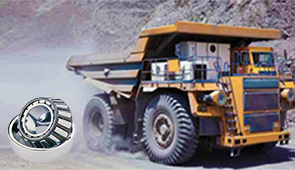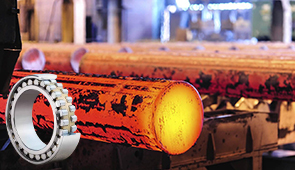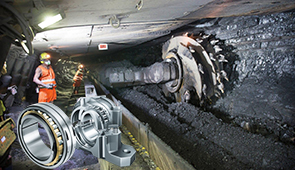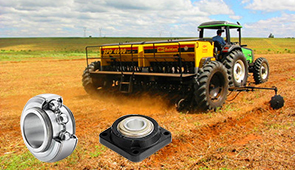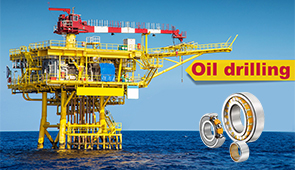How Oil Acts as a Lubricant to Reduce Friction Between Moving Parts
Friction is an inherent challenge in mechanical systems, as it can lead to wear, energy loss, and component degradation over time. The use of lubricants, especially oil, is a critical engineering solution for mitigating these effects and ensuring the smooth operation of moving parts. This article explores the technical principles behind how oil functions as a lubricant, examining its ability to create a protective film, reduce contact between surfaces, and dissipate heat generated during motion. Additionally, the discussion will emphasize the importance of oil’s chemical composition, viscosity, and thermal stability in enhancing the performance and longevity of machinery. By the end of this article, you’ll gain an in-depth understanding of oil’s role in minimizing friction and promoting the efficiency of mechanical systems.
What is Friction, and How Does it Affect Moving Parts?
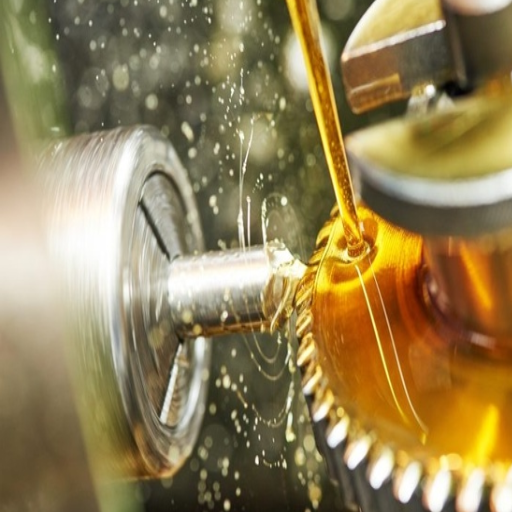
Understanding the Basics of Friction
Friction is the force that opposes the motion of two bodies that are in contact or in relative motion with each other. It is fundamental for maintaining the effectiveness and operative characteristics, such as degradation and power usage, of any mechanical component. Friction originates from several microscopic sources, including the roughness of surfaces, material characteristics, and bonding.
- Coefficient of Friction (μ): A number without any units that defines the level of strength with which a resisting force opposes movement of a body and perpendicular force acting a tendency to penetrate a surface of contact. It is quite different for different surface materials and friction types, such as static friction, which occurs when there is no motion, and dynamic friction, which occurs when there is motion and the object is sliding.
- Surface Roughness: This is measured usually in micrometers (µm) or Ra (average roughness) and explains the precision of the microscopic contact. Higher roughness, meaning more protrusion and thereby will usually result in friction due to mechanical locking of surface.
- Normal Force (N): This is defined as the resistance a body offers when it is made to move on another surface. It is expressed Newtons (N). Normal force always increases the friction as well.
- Relative Velocity: The motion of the two bodies in contact with each other causing motion in straight or circular paths, temperature change, amount of speed friction is always action in proportional. The contact can move at different velocities without permission from their collision partner.
Having this understanding allows one to predict and manage friction as it pertains to the efficiency and wear for moving parts within mechanical systems.
The Role of Friction in Machinery
Friction transforms energy efficiency, wear, and heat generation in machinery and defines the role machinery is to play.
- Energy Efficiency: Heat is produced from kinetic energy as a result of friction. In order to achieve optimal output, friction must be kept to a minimum because it is a loss. Notable energy losses are caused by the coefficient of friction (μ).
- Wear: Friction induces wear on surfaces that are in contact with each other. Hardness of material’s surface, compatibility of materials, and lubrication fundamentally influence the rate of wear. For instance, consistent operation is supported by the use of harder materials which are suitably lubricated as they tend to experience lower wear.
- Heat Generation: Machinery performance and material properties are altered due to heat produced by frictional forces. To maintain a constant and safe operation, many tools need to be monitored, such as the temperature and thermal conductivity of the materials.
These factors enable the adoption of appropriate material selection, lubrication policies, and system design changes which increase the reliability and durability of machines.
How Does Oil Reduce Friction Between the Surfaces?
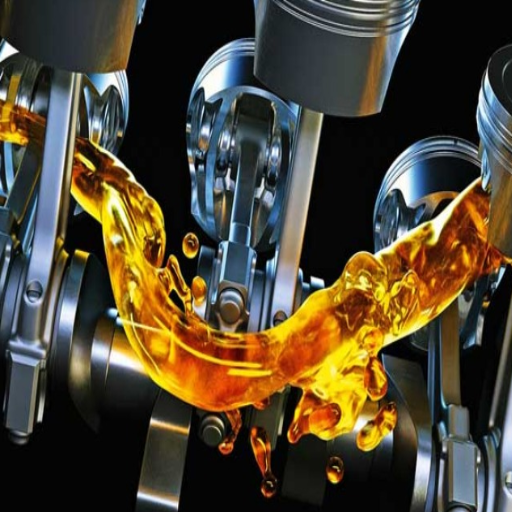
The Role of Lubrication in Reducing Friction
Maintaining the correct surface separation through lubrication is fundamentally important to reducing the frictional forces that can occur between two moving parts, as well as preventing severe wear resulting from direct surface contact. In performing work, the interaction of two surfaces is always accompanied by lubricant use, which lowers friction (denoted as μ) and the resulting wear and heat as well. Important qualitative features that need consideration in this case are:
- Viscosity (η): The ability of the lubricant to resist flow. Higher viscosity fluids create films that are thicker, thus, such fluids are better suited for cases with high loads and low speeds. Viscosity fluids with lower resistance to flow are necessary in provisions of higher speeds to minimize energy loss.
- Load-Carrying Capacity: Lubricating agents are formulated to withstand differing levels of pressure such that the lubricant can retain its structure under harsh conditions, ensuring that breakdown or contact with a metal surface does not occur.
- Thermal Stability: An effective lubricant should be able to withstand thermal degradation when exposed to high temperatures and still maintain the necessary protective film for vehicle components.
- Additives: Surface protection is enhanced as well as the effectiveness of modern lubricants high with anti-wear, anti-corrosion, and extreme pressure lubricants, leading to improved systems life.
The optimization of these features leads to the reduction of wear, improvement of the efficiency of machines, and automation of the transfer of energy, which underscores the importance of lubrication to mechanical systems.
How Oil Acts as a Lubricant
Oil reduces friction and lubricates contacting parts by bathing them in oil. This ensures that the parts function well. This is achieved through a combination of the physical and chemical properties of oil:
- Viscosity: The flow rate of oil and its strength of film is referred to as its viscosity. The viscosity has to be just right to enable formation of sufficient lubricating film that separates moving parts. Proper use of oil with the accurate viscosity grade ensures that oil is used effectively from the aspect of friction and lubrication.
- Thermal stability: High-quality lubricating oils have good resistance to thermal breakdown at high temperatures. This thermal stability means that the oil maintains its protective film and works as desired over a lengthy period, even when subjected to high levels of heat.
- Additives: Most oils have been enhanced to give anti-wear, anti-oxidant, and anti-corrosion properties. The performance of the system with regards to wearing down the components is optimized and improved, thus increasing the life span of the system when subjected to very high operational pressure.
Considering these technical requirements, oil serves as and is vital for the minimization of energy loses through friction, component wear, and the reliability and efficiency of mechanical systems which are very important for industral purposes.
The Science Behind Oil’s Ability to Reduce Friction
The reduction of friction that comes with oil stems from its designed chemical and physical structure that aid interactions in moving surfaces. Spaces are created that minimize surface contact and decrease the chances of wear through direct separation as direct metal contact is avoided.
- Viscosity: Viscosity impedes the movement of oil and it determines the oil flow along with the thickness of a lubricating film. When working with machines that provide greater load of force at slower speeds, high viscosity oil works best while lower viscosity oils serve best in systems where there is rapid movement.
- Viscosity Index (VI): Oils with higher VIs exceed greater thermal bounds while still maintaining an ideal viscosity characteristic, allowing qualified lubrication.
- Additives: Anti-wear additives (for example, zinc dialkyl dithiophosphate or ZDDP), friction modifiers and extreme pressure additives improve the boundary lubrication regime.
- Thermal Stability: Oils with high thermal stability provide better lubrication over time because they remain unaltered under high-temperature conditions.
- Oxidation Resistance: It averts break-down of sludges and deposits which restrict friction reduction capability allowing the system to run for longer periods without hindrance.
Since all these factors are dependent on one another optimizations of these elements might guarantee minimum friction loss and functionality setup for various industries and machines.
What Are the Types of Oil Used to Reduce Friction?
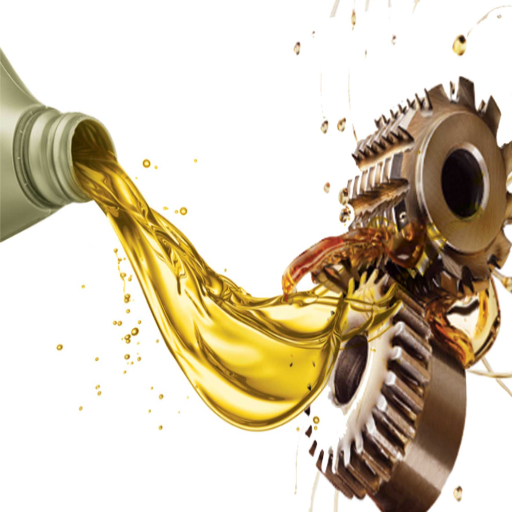
Types of Lubricants and Their Applications
- Mineral Oils: Lubricants industrial minerals are gotten from the distillation of crude oil. Being the cheapest among the industrial lubricants and moderately attaining their purposes, they are widely used.
- Synthetic Oils: synthetic oils are engineered with chemical reactions which are more preferable than the use of mineral oils in more stressing environments. These oils are better suited for extreme high temperatures with additional load capabilities.
- Bio Based Lubricants: these lubricants are manufactured from natural or vegetative products and are so referred to because they have less negative environmental impact. These types of lubricants are highly regarded because of their degradable nature.
After analyzing the technical characteristics of the operating conditions like temperatures, energy, and biological factors, I can choose the most effective lubricant while taking into consideration environmental safety.
Choosing the Right Oil for Machine Parts
Choose the right oil for machine components with the utmost care because that decision greatly determines the efficiency of the machinery and its components.
- Viscosity Grade (ISO VG or SAE Grade): The oil viscosity needs to be correlated with the machine’s operational speed and temperature. Low viscosity oils are preferred for high-speed operations, whereas high viscosity oils are more suitable when heavy load operations are performed.
- Thermal Stability: The oils should be able to endure the temperature range within which they will operate without breaking down. For instance, in high temperature applications, synthetic oils are often preferred due to the higher thermal stability.
- Load Carrying Capacity (Extreme Pressure Ratings): Heavy loaded machines need oils that have higher load carrying abilities and with additives such as EP (Extreme Pressure) which is crucial to limit wear, that oils are absolutely necessary.
- Compatibility with Materials: For every metal type used in the machine, the oil must be chemically compatible with the seals and gaskets as well in order not to degrade or corrode.
- Anti-Wear and Anti-Friction Properties: Certain oils with specific anti-wear and anti-frictoin additives such as zinc dialkyldithiophosphate (ZDDP) were chosen in order to achieve a longer life span for the protected components by enhancing particualr anti-wear characteristics and lowering possible friction.
- Contaminant Tolerance: Higher-grade lubricants often come with a built-in feature for filtration and cleaning through the use of detergents or dispersers which aid in enhancing the overall performance of the system.
Considering and tailoring these measures to a particular machine makes it feasible to decrease friction, energy losses, and increase the overall reliability of the system.
How Does Oil Lubrication Affect Kinetic Energy?

The Relationship Between Friction and Kinetic Energy
The impact of kinetic energy (KE) is affected by friction because of the resistance force that opposes the motion of two surfaces in contact. Friction transforms kinetic energy into heat, which lowers the efficiency of mechanical systems. This effect is reduced by lubrication with oil that forms a film separating the surfaces, resulting in a lower friction coefficient (µ) and greater retention of the system’s kinetic energy.
- Coefficient of Friction (µ): Lubrication with synthetic oils significantly reduces this value, with some applications having µ values from 0.003-0.02.
- Viscosity Index (VI): A higher VI results in better lubricant performance at different ambient temperatures, directly aiding in lowering friction.
- Film Thickness (h): A well-defined lubricant film increases the amount of surface that is not in contact, reducing energy losses.
- Load Capacity (P): Effective lubricants are stable at high pressure; hence, they optimize kinetic energy.
- Operating Temperature: Lubricants reduce the generation of heat due to friction and, therefore, enhance system efficiency.
Considering these factors will help reduce the friction-induced losses of lubricant and oil is high-quality grade, hence enabling optimized performance throughouts mechanical systems.
How Lubrication Influences Energy Efficiency
Proper lubrication is instrumental in reducing friction and wear on mechanical systems while increasing overall energy efficiency. Effective lubrication lowers energy expenditures and improves the system performance. Underneath are the primary considerations and why they matter:
- Coefficient of Friction (μ): Applying high-quality lubricants that have low coefficient of friction reduce frictional resistance, hence resulting to fuel economy.
- Viscosity (η): Drag is defined as resistant force that acts opposite to the direction of motion of an object. A lubrication with adequate viscosity ensures a protective film is formed during drag for fuel efficiency. An optimal value prevents excessive drag whilst providing sufficient protection.
- Thermal Stability: To assure there is no wasted energy due to oil degradation, lubricants should function consistently within a provided temperature range by retaining construct and frictional forces do not greatly increase as a result of degraded oil.
- Load-Wearing Capacity (P): Above normal wear capabilities of a lubricant prevent micro-welding of two surfaces in contact at high pressure and high temperature that leads to integrated deformation of metal surfaces thus reducing energy expensive wear.
- Operating Temperature Range: Lubricants designed for certain narrow temperature range do not lose their properties at extreme temperatures and do not result to energy wasting via thermal break up or excessive fluidity.
Adjusting these prerequisites by the system specifications permits lubrication to vastly enhance machinery efficacy while conserving operational energy costs.
What Are the Benefits of Using Oil in Moving Parts of a Machine?
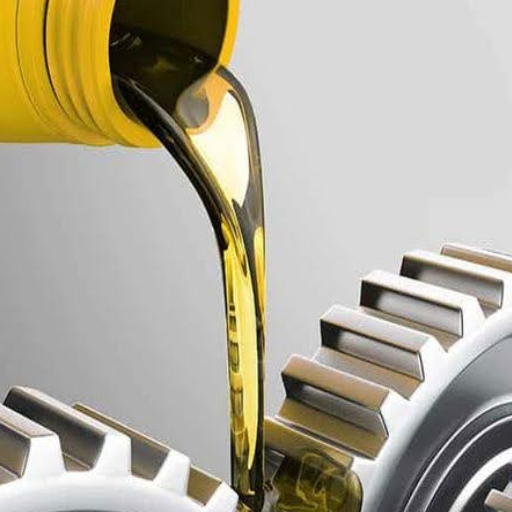
Improving Machinery Longevity with Oil
Applying oil to the moving components of a machine is critical as it decreases friction, lowers wear and tear, and helps cool the systems, all of which improves the life of the machinery. Furthermore, by using certain technical characteristics as a basis for selecting the type of oil I can achieve the best performance and the longest useful life of the equipment.
- Viscosity Index: By selecting oil with a suitable viscosity, I ensure that the oil maintains a stable film under varying high and low operational temperatures and that metal-to-metal contact is avoided.
- Additive Content: Oils that contain anti-wear and anti-corrosion additives enhance surface protection from degradation while increasing component longevity.
- Thermal Stability: Oil with high thermal stability prevents oxidation and breakdown, therefore, ensuring at high temperatures consistent lubrication is guaranteed.
- Operating Temperature Range: Ensuring the oil matches the temperature range of the system guarantees efficacy while being thick in cold environments and not losing viscosity in hotter conditions.
By sticking to these factors, I can enhance lubrication for the machinery, lower maintenance costs, and improve operational life.
Reducing Friction and Wear for Better Performance
The performance of any machining equipment is impacted by friction and wear, which must be minimized to improve efficient operation and mechanical life. The application of suitable lubricants, the use of quality materials, and proper surface treatment enables fatigue and friction to be minimized.
- Lubricants: Selected lubricants should possess low friction factors and significant resistance to thermal degradation.
- Surface Treatment: Increase toughness and durability by implementing hardening surface treatments such as nitriding or coating surfaces with titanium nitride (TiN).
- Material: Use of low strength, hardened steel composites. Consider deterioration of materials due to the work environment.
Following these technical delimitations will result in effective control of wear and tear, thus improving the functional efficiency and reliability of the machinery over time.
Economic and Environmental Advantages of Oil Lubrication
Oil lubrication offers remarkable economic benefits, such as the reduction of mechanical part wear and minimum replacement costs. It also enhances energy efficiency due to decreased friction which results into less power intake and cheaper operational expenditure. In addition, the practice of cost reduction alongside the ability to recycle some lubricants in using and disposing of materials aids in waste reduction.
The use of oil lubrication environmentally curtails the production of metallic debris, mitigates excessive energy loss by reducing frictional losses, as well as lowers carbon emissions. Newer formulations, such as bio-based or synthetic lubricants, are made to be less toxic and more biodegradable, thus being more eco-friendly.
- Viscosity Index: To achieve the best performance across all temperature ranges and reduce energy loss due to fluid friction, select lubricants with a high viscosity index.
- Thermal Stability: Choose a lubricant that is resistant to degradation at high operating temperatures to reasonably guarantee minimal environmental contamination risks.
- Additive Composition: Add lubricants with anti-oxidant and anti-wear additives to improve lubrication properties, reduce component degradation, and enhance reusability.
- Compatibility: Check if the lubricant and material interfaces are compatible to prevent chemical interactions which surface wear or damage.
These measures ensure that oil lubrication systems are achieved with economic effectiveness and eco-friendly procedures.
Frequently Asked Questions (FAQs)
Q: How does oil act as a lubricant to reduce friction between two solid surfaces?
A: Oil acts as a lubricant by creating a thin layer of liquid between two solid surfaces, which reduces the friction between them. This layer prevents direct contact between rough surfaces, allowing them to move smoothly over each other.
Q: What role does oil play in an automobile engine?
A: In an automobile engine, oil helps by reducing friction between moving parts, preventing wear and tear, and ensuring smooth operation. The lubrication reduces friction by creating a slippery barrier between engine components.
Q: How does oil prevent direct contact between surfaces?
A: Oil prevents direct contact between surfaces by forming a lubricating layer that separates the surfaces. This layer minimizes the interlocking of asperities, which are tiny projections on surfaces that can catch on each other and increase friction.
Q: Can you explain the hydrodynamic lubrication process?
A: Hydrodynamic lubrication occurs when a layer of oil is maintained between two surfaces in motion, such as in bearings. As the surfaces move, the oil is drawn into the space between them, creating a pressure that supports the load and prevents contact.
Q: Why is lubrication important in overcoming force acts upon an object?
A: Lubrication is crucial because it reduces the friction that would otherwise act as a force opposing the motion of an object. By minimizing this friction, lubrication reduces the energy needed to overcome it, allowing for more efficient movement.
Q: How does oil reduce friction in the context of a cart?
A: In the context of a cart, oil reduces friction by lubricating the axles and wheels, allowing them to rotate smoothly. This decreases the friction between surfaces, making it easier to push or pull the cart.
Q: What happens if parts move without lubrication in machinery?
A: If parts move without lubrication, the friction between surfaces increases, which can lead to overheating, increased wear, and potential failure of the machinery. This is why lubrication is essential for the longevity and efficiency of mechanical systems.
Q: How does oil help in reducing friction by creating a liquid barrier?
A: Oil helps by creating a liquid barrier that separates surfaces, which deform under pressure. This barrier keeps the surfaces from interlocking and reduces the friction that occurs when surfaces are pressed against each other.
Q: What is an example of oil acting as a lubricant in everyday life?
A: An example of oil acting as a lubricant in everyday life is in car engines. Oil is applied to the engine components to reduce friction, prevent overheating, and ensure smooth operation.
Q: What is the role of tribology in understanding lubrication?
A: Tribology is the study of friction, wear, and lubrication. It plays a vital role in understanding how lubrication reduces friction by examining the interactions between surfaces in relative motion and developing solutions to optimize lubrication effectiveness.
UCTH213-40J-300 with Setscrew(inch)
CNSORDERNO: Normal-duty(2)
TOGN: UCTH213-40J-300
SDI: B-R1/8
SD: 2 1/2
UCTH212-39J-300 with Setscrew(inch)
CNSORDERNO: Normal-duty(2)
TOGN: UCTH212-39J-300
SDI: B-R1/8
SD: 2 7/16
UCTH212-38J-300 with Setscrew(inch)
CNSORDERNO: Normal-duty(2)
TOGN: UCTH212-38J-300
SDI: B-R1/8
SD: 2 3/8
UCTH212-36J-300 with Setscrew(inch)
CNSORDERNO: Normal-duty(2)
TOGN: UCTH212-36J-300
SDI: B-R1/8
SD: 2 1/4
UCTH211-35J-300 with Setscrew(inch)
CNSORDERNO: Normal-duty(2)
TOGN: UCTH211-35J-300
SDI: B-R1/8
SD: 2 3/16
UCTH211-34J-300 with Setscrew(inch)
CNSORDERNO: Normal-duty(2)
TOGN: UCTH211-34J-300
SDI: B-R1/8
SD: 2 1/8









